In 2019, we were fortunate enough to be invited by Vaucluse Provence Attractivité on an autumnal visit to Vaucluse, Provence.
A trip that promised quiet, out-of-season villages, hushed lanes and mist-shrouded mountains, we wouldn’t be visiting Provence during the height of summer – as lavender filled the air and coaches of tourists rolled into the region – but autumn, as the region positively glowed under a soft autumnal light.
Below is the 4 day Provence itinerary that we followed. This includes the most beautiful spots to visit in Provence, where to stay in Provence, where the best wineries are in Provence and the prettiest villages in Provence.
4 Day Provence Itinerary
Day 1: Avignon
Where is Avignon?
Avignon, known as the subject of a famous nursery rhyme, is also Provence’s historical capital and one-time Papal seat.
The perfect place to begin your 4 day Provence itinerary, Avignon is perched on the banks of the tempestuous River Rhône – a UNESCO-protected city filled with cobbled streets, frescoed walls and historical ramparts.
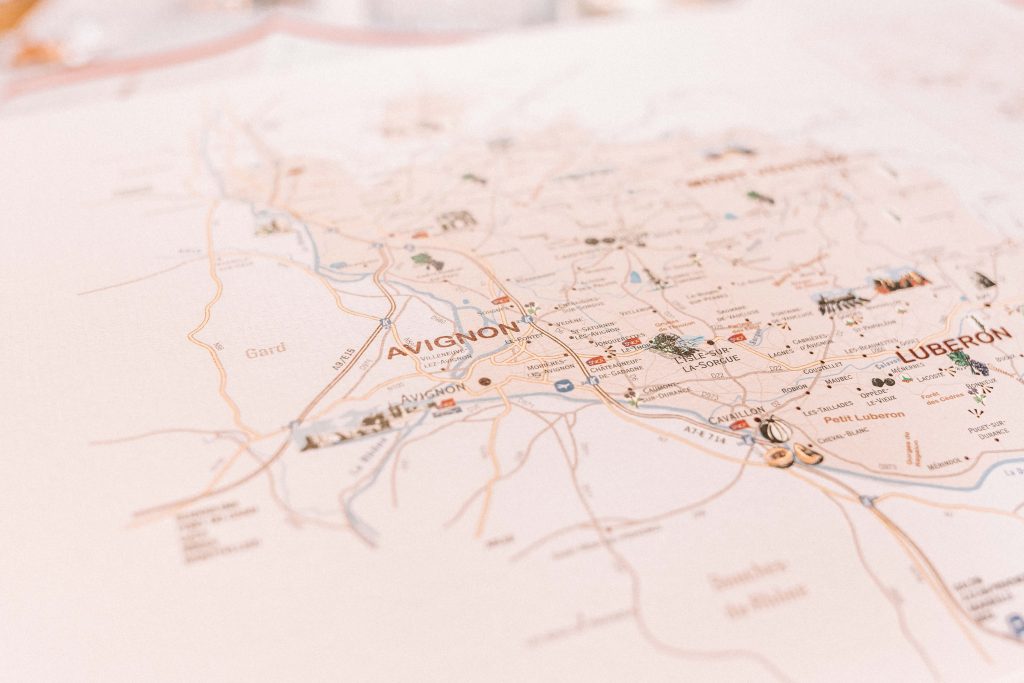
In the summer, the city fills with tourists, as crowds arrive for the contemporary performing arts festival -the Festival d’Avignon – and the warm summer evenings invite al fresco dining.
But in the autumn, things change: the ‘mistral’ arrives.
“The mistral is the cold northwesterly wind that blows down the Rhône Valley during the spring and late autumn”, Sophie, our guide from Avignon Tourism, explained. ‘But’ – she added quickly – ‘if you wrap up warm, there’s not better time to visit this city’.
Stepping outside into Avignon’s main square – ‘Place de l’horloge’– the sun shining and an antique carousel turning, I couldn’t have agreed more.
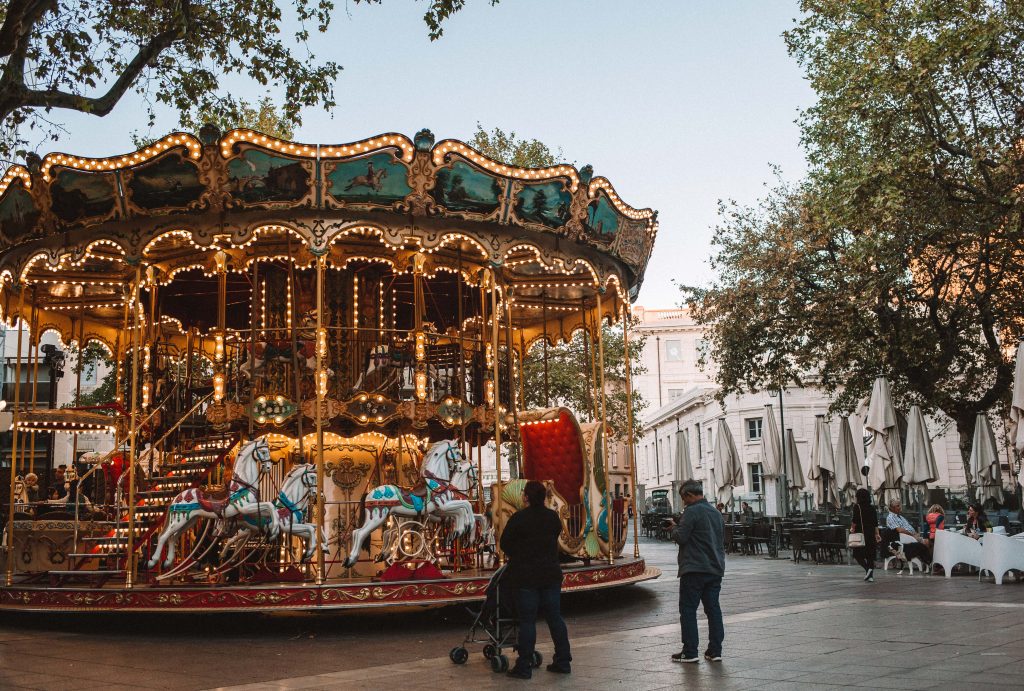
Things to do in Avignon, France
1. Visit to Palais Des Papes
Perhaps it’s the haunting nursery rhyme, but when thinking about Avignon, I always assumed it was a city characterised only by a (now half-fallen) bridge. It had escaped me entirely that the city was once home to a string of runaway Popes.
Taking centre stage within Avignon’s Old Town (all that falls within the city’s historic walls), Palais Des Papes (The Pope’s Palace), is the largest Gothic Palace ever built – the vision of Pope Clement V. A vast place filled with echoing halls, three-meter thick walls and stunningly detailed fourteenth-century frescoes, Palais Des Papes offered Avignon’s seven breakaway Popes a home-away-from-home.
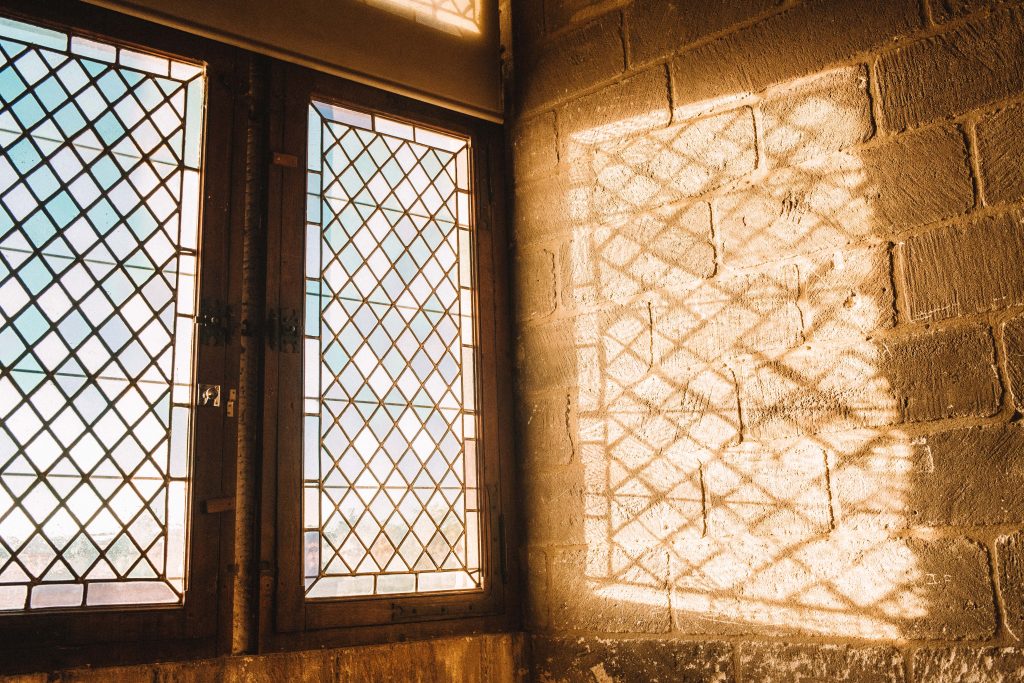
Covering a whopping 15,000 metres (the equivalent of four Gothic cathedrals), today visitors can explore twenty of the Palace’s rooms, including the papal bedrooms, chapels and soaring cloisters.
As a quick aside: we visited the Palace at sunset, just as the sun slipped below the green banks of the River Rhône. Climbing one of the Palace’s ten towers, we were afforded an incredible view across Avignon and beyond. This was absolutely one of my highlights of this Provence itinerary.
The Palace is open all year round, with tickets for adults costing €12 and children under eight going free.
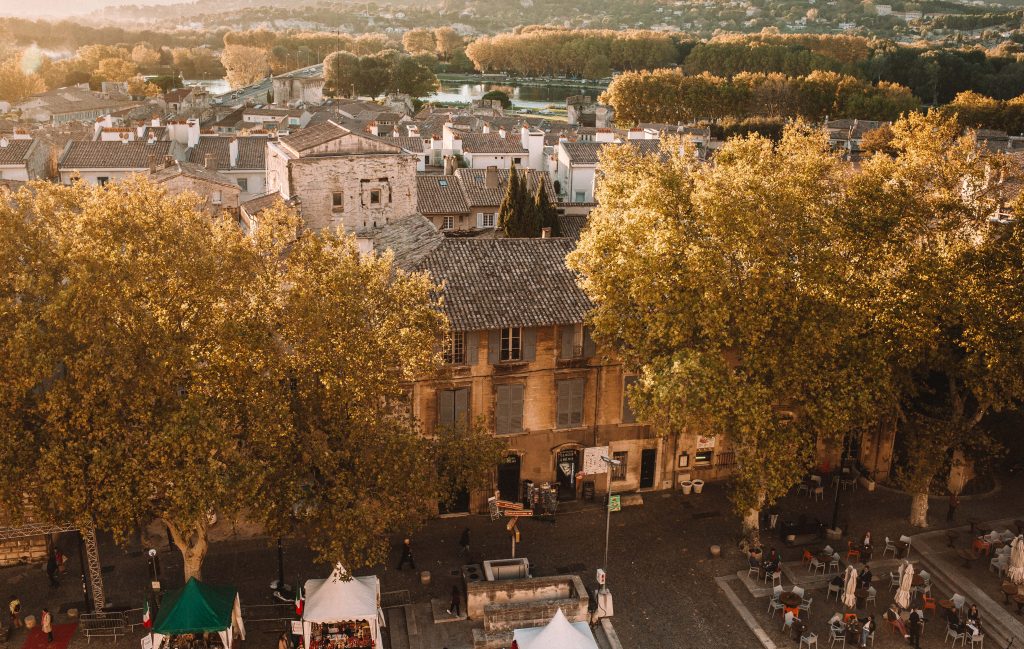
2. Pont Saint Benezet (the famous bridge)
The subject of the famous nursery rhyme, Avignon’s famous bridge has a rich and surprising history.
Apparently built by a shepherd (Benezet) following an order from God (who also insisted he carry a boulder down from the mountain and throw said boulder into the river), it was a task that Benezet completed with apparent ease.
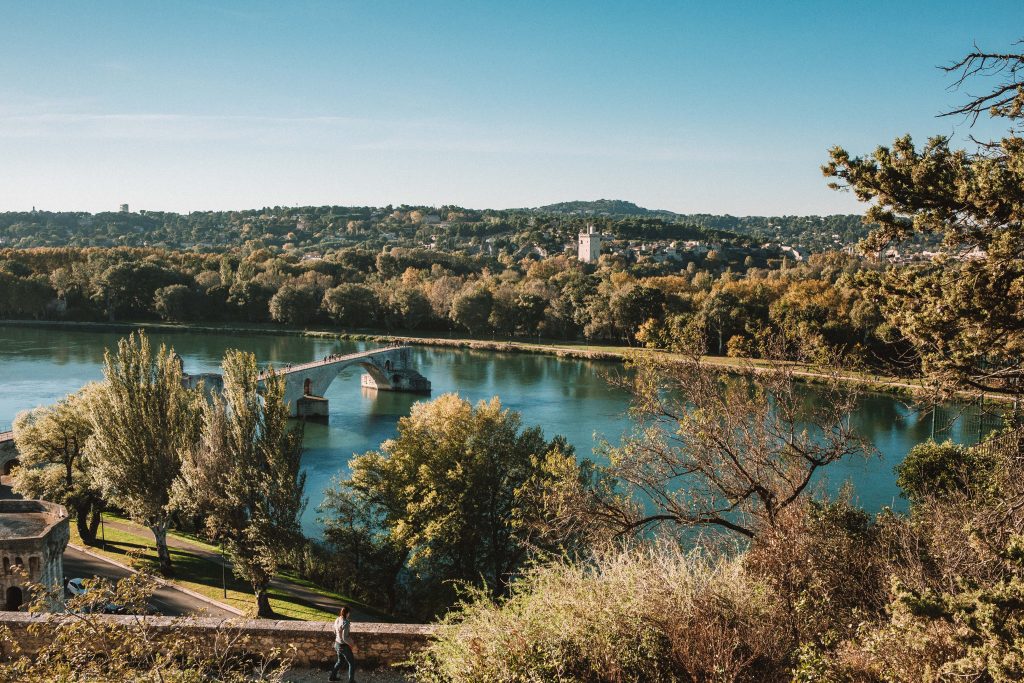
Once spanning 900 metres and boasting 22 arches, the Pont Saint Benezet had been one of Provence’s most iconic crossing points, forming part of the pilgrimage between Spain and Italy.
Completed in 1185, the Bridge became the only place between Lyon and the Mediterranean that people could cross the dangerous Rhône River; ensuring it was an ever-busy and popular highway.
Today, just four arches of the Bridge remain, but it is still well worth adding to your Provence itinerary. Although Saint Benezet’s former remains have been since removed from the bridge, a shrine still resides here, alongside beautiful views across to the island of Ile de la Barthelasse.
Ticket prices for adults cost just €5 and again, I’d recommend visiting at sunrise or sunset.
3. A Visit to Les Halles
A covered market, Les Halles has been a popular spot for shoppers and diners for over a century – and a trip here is definitely one of the top things to do in Avignon.
Filled with a vast array of small eateries and over forty stalls overflowing with fresh lobsters, freshly caught pheasants and home-grown olives, Les Halles is a must on our Provence itinerary (especially foodies).
Throughout our whistle-stop tour of Les Halles, we sampled some of Provence’s most delicious autumnal produce, including an absurdly acidic goat’s cheese (not for the faint-hearted) and engorged cloves of pickled garlic.
It’s a fantastic introduction to Avignon’s gastronomic scene and a wonderful place to spend a morning exploring.
4. Visit the Best Restaurant in Avignon
Avignon has no shortage of acclaimed restaurants, including several Michelin-starred establishments.
Whilst visiting Avignon, we enjoyed lunch atGrand Café Barretta.
Secreted away at the back of a typically rustic building, the Grand Cafè opens up into a large, galleried room. Located in a beautiful square filled with ancient chestnut trees, the restaurant offers beautifully presented ‘plats du jour’ and reasonably priced set menus.
For dinner, we headed to Le 46; an unassuming restaurant tucked away behind a cobbled street. Just a few minutes’ walk from the Palais de Papes, Le 46 avoids the crowds, instead offering a cosy place to enjoy fresh Provençal food – all complimented by the company of a resident cat.
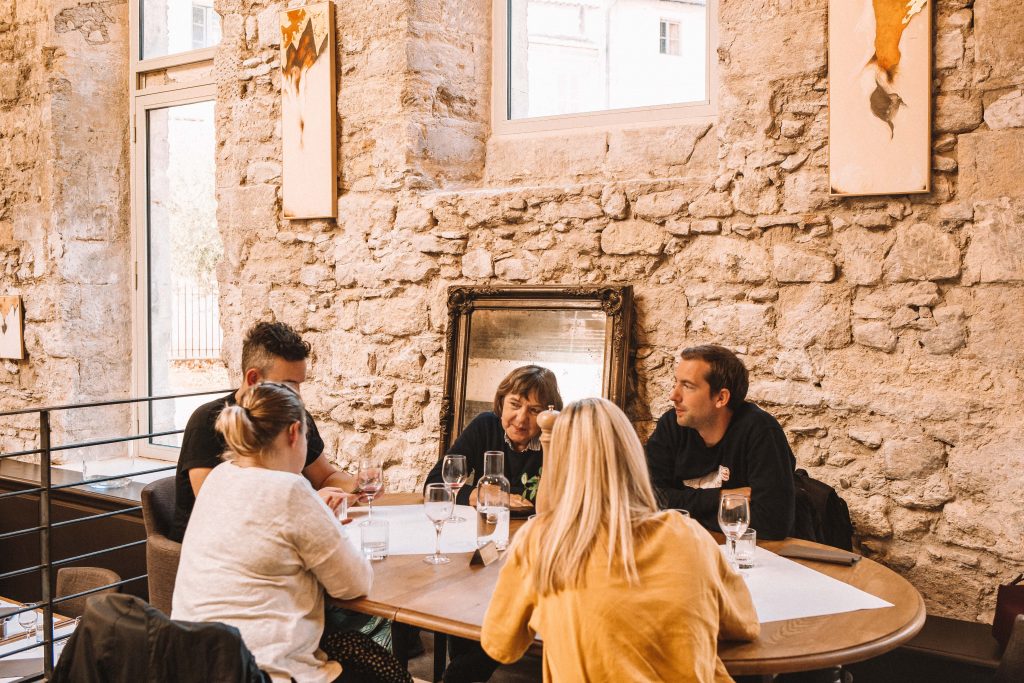
4 Day Provence Itinerary
Day 2: Visit Mont Ventoux
For most, a Provence itinerary means only rolling lavender fields and ancient vineyards. Yet, over these fields loom something else entirely: lofty, snow-capped mountains.
In Vaucluse, one mountain in particular takes centre stage: Mont Ventoux (or ‘the Giant of Provence’).
A soaring 1,912 metres high, Mont Ventoux resides over the vineyards of the Cotes du Ventoux, shelters the lavender fields of Val de Sault and protects the lush Toulourenc Valley. Peer at any photograph from Vaucluse, and you’ll be sure to spot Ventoux’s towering shadow in the background.
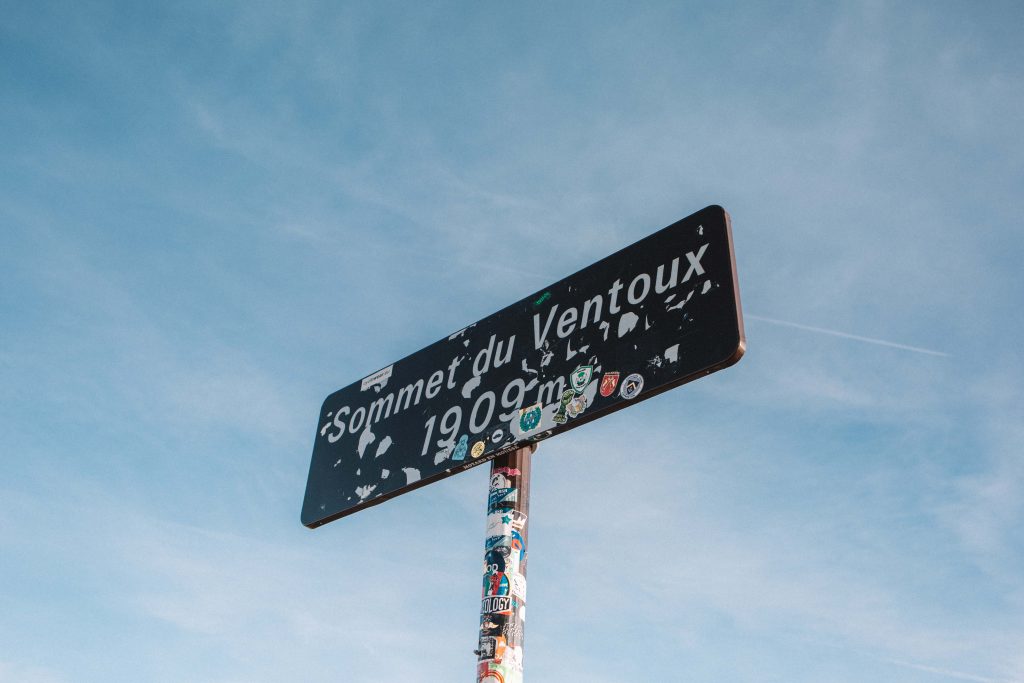
The mountain is known for having two very different sides: one facing the ragged peaks of the Alps, the other gazing towards the Mediterranean.
Whilst one side features gentle slopes filled with lavender, orchards and fields of strawberries, the other is home to bands of determined cyclists and the yearly ‘Tour De France’ race.
For those who enjoy cycling and hiking, a common route up the mountain begins in Bedoin; the pass taking you through some of the area’s most beautiful vineyards and lavender fields. Often undertaken over several days, completing this route is a challenge in itself.

Alternatively, it’s also incredibly easy to simply drive up to Ventoux’s summit. Beware: the mountain is true to its name – Ventoux also being the French word for ‘wind’. Despite the warmer temperatures in the valley, it’s wise to wrap up warm before reaching the top.
For those preferring a more gentle introduction to mountain life, there are plenty of other kinder hikes in the nearby Dentelles de Montmirail area. With an almost Mediterranean-like landscape, we enjoyed a warm afternoon exploring this region, walking past fragrant bushes of wild rosemary and basil, and exploring the soft limestone cliffs. Suggestions for hikes around the Dentelles de Montmirail area can be found here.
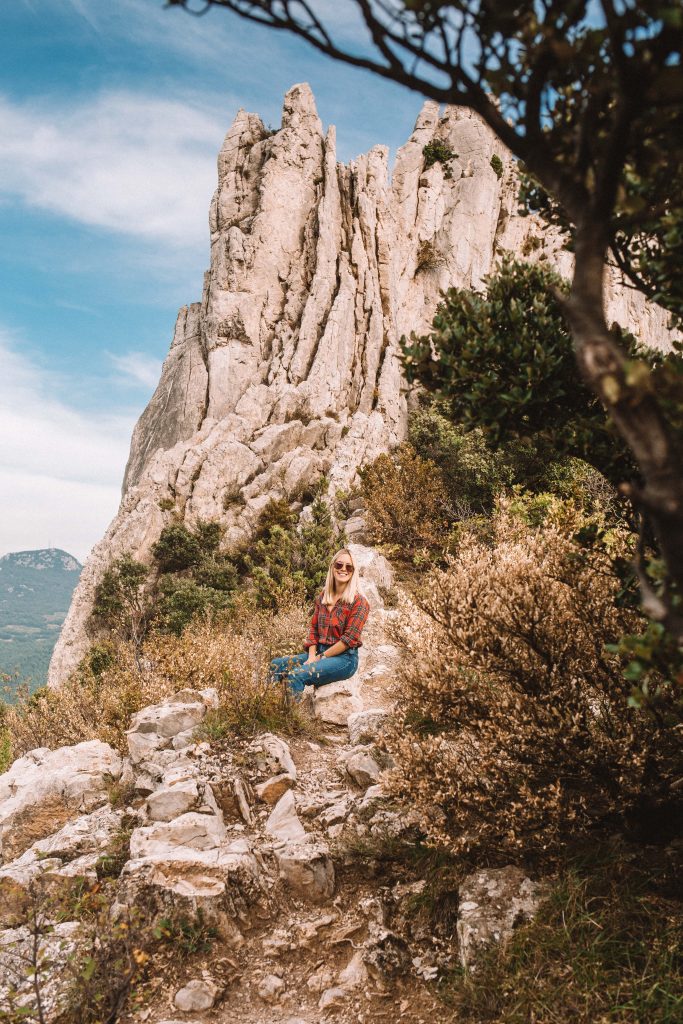
Hotels Near Mont Ventoux: After our own mountain expedition, we stayed at the serenely beautiful Domaine de Cabesse, nestled beneath the village of Séguret.
4 Day Provence Itinerary
Day 3: Visit Prettiest Villages in Provence
Of course, no Provence itinerary is complete without a walk around its famously pretty villages.
1) Gigondas
Nestled in the foothills of the Dentelles de Montmirail, Gigondas has a Disney-like quality to it. Yet despite its beautiful aesthetics, Gigondas is famous for something a little more drinkable – its vast cellars of deep, red wine.
Home to just 700 residents and surrounded by 1,250 hectors of vineyards, the village is a place built on wine-making. Indeed, the local Grenache Noir grape is said to have been grown here for over 2,000 years.
2) Séguret
Séguret is said to be one of France’s prettiest beautiful villages.
Whilst July sees Séguret fill with bustling cafes and gift shops, come autumn in Provence, the village resumes a more peaceful pace: one marked by gently glowing windows and prowling cats.
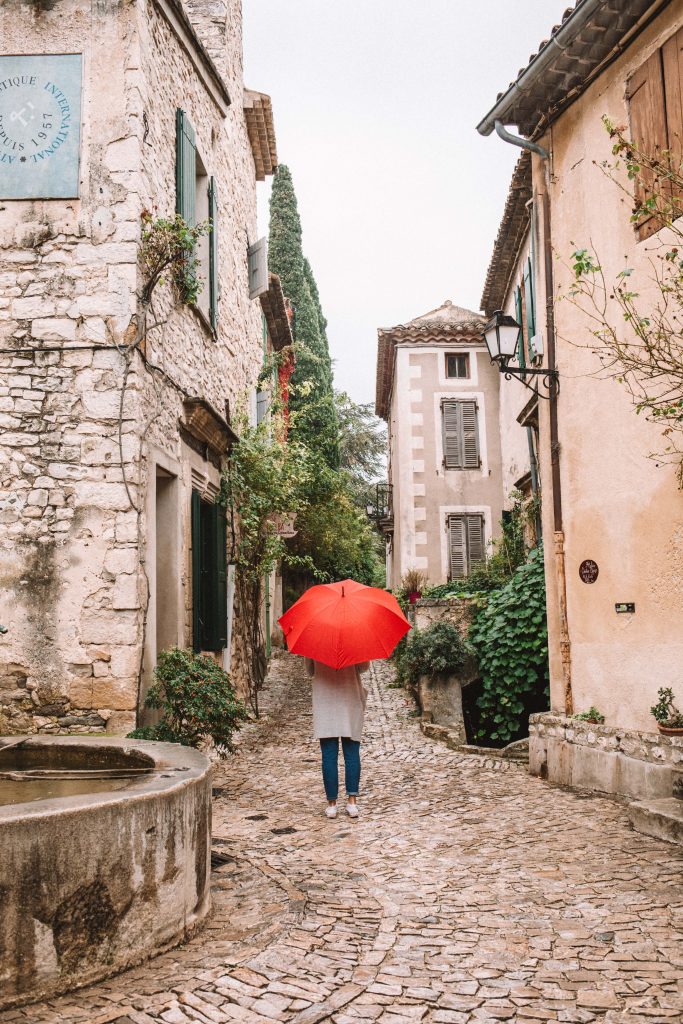
A village of cobbled streets, 100-year old sycamore trees and echoing wishing wells, Séguret is protected by its historic Huguenots’ gate, which still feature the original iron-bound wooden shutters.
Walking its winding lanes, we were told that whilst the village remains beautiful throughout the year, at Christmas, Séguret unveils its most magical secret: its nativity scene.
Paraded through the many foothills and alleyways of the village, Séguret glows under the light of lanterns and candles, as a real-life nativity scene plays out. There is an unmistakably jovial mood in the air, as food stalls arrive to provide traditional Provençal ‘fougasse’ bread and ‘panade’ soup.
Like most of Provence’s towns, Séguret can only be accessed by foot, with places for parking clearly marked at the bottom of the village.
3) Gordes
Gordes is one of Provence’s most picturesque villages.
A must visit on your Provence itinerary, Gordes tumbles down the hillside over a number of tiers; the sharp drop of the Vaucluse plateau waiting below.
Flanked by ancient Cyprus trees and neatly presented gardens, the village is yet another maze of ‘calades’ or narrow streets.
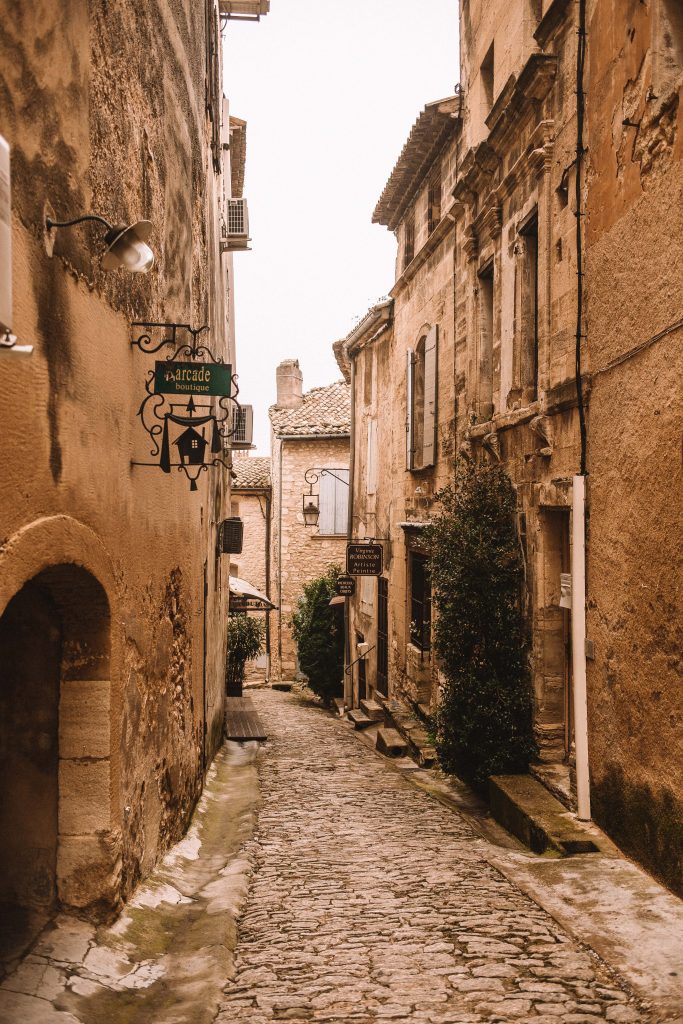
For those looking to combine a trip to Gordes with an opportunity to see another of Provence’s most photographed sites, then why not walk down the hill towards the famous Notre-Dame Abbey de Senanque.
With the round-trip totalling just under 7km, the walk offers incredible views across the Luberon Valley and a view of the world-famous Abbey from above; surrounded by its sea of lavender.
Originally founded in the 9th Century, the Abbey has long remained hidden within this solitary valley, offering a sanctuary to traditional Cistercian Monks. Living according to the rules of St. Benedict, the Monks dedicate their lives to labour and prayer.
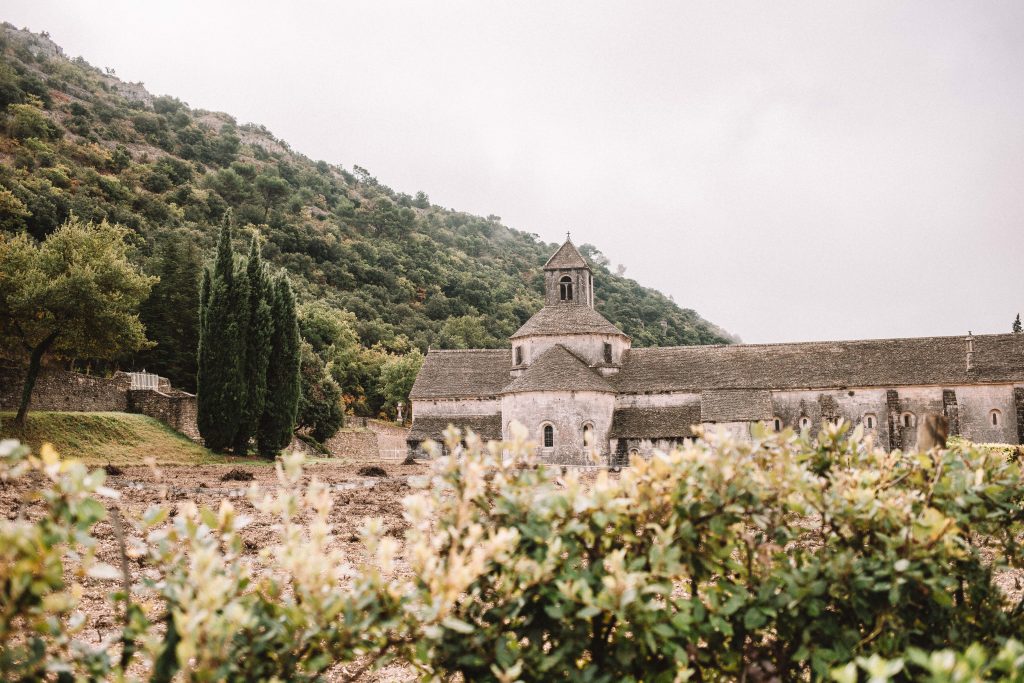
As Senanque is still a working Abbey, visitor numbers are tightly controlled. However, both guided and non-guided tours are available, and visitors are also able to attend some celebrations e.g. Mass.
Entry tickets for adults begin at €7.50.
4) Roussillon
Quite unlike its peers, Roussillon is a village known perhaps not for its beauty, but for its startling colour.
Situated in the heart of one of the world’s largest ochre deposits, Roussillon is a vision of red and orange; a burning flame of a village and a must-visit on your 4 day Provence Itinerary.
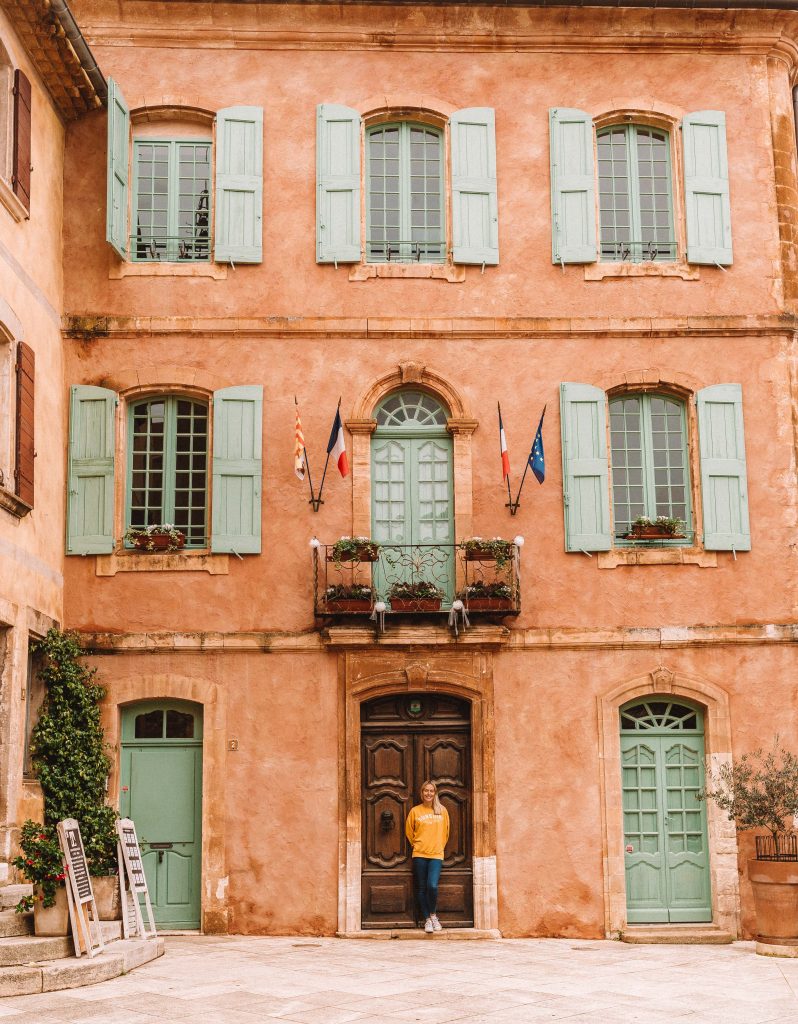
Once home to crowds of inspired artists, today Roussillon maintains its artistic streak; with multiple galleries and art stores filling its lanes.
Boasting a palette of seventeen shades of ochre – from a lemony yellow to a fiery red – Roussillon reminded me of a carefully presented paint chart.
Visitors to Roussillon are also able to see for themselves the source of these vibrant colours, with free access to the nature trail Sentier des Ocres. Leading to where the original mineral deposits can be found, this spot is claimed to model a smaller (and distinctly French) version of the Grand Canyon.
Provence Itinerary
Day 4: Enjoy Best Wine Tour in Provence
An area dominated by vineyards, Provence is a region stained by the jewel-coloured juice of its grapes.
It’s a place where wine making has taken place since the time of the Greeks; where Romans once consumed barrelfuls of delicate Rosé wine and the Clergy nurtured vineyards.
Naturally, any Provence itinerary must therefore include reference to a wine tour (or two).
Domaine De La Tourade
Virginie and Frédéric Haut are sixth generation winegrowers in the Domaine de la Tourade, specialising in traditional wine making and harvesting techniques.
A visit to their vineyard is therefore a little like stepping back in time – back to an age when the vineyard remained sacrosanct.

However, despite this grape-inspired reverence, Fréd wanted to bring his vineyards to life: offering his visitors not only a glimpse of the traditional, but an opportunity to experience something a little more untraditional.
A wine tour inside a restored VW camper van.
Rates for the tour begin at €15 for adults and €8 for children.
For those looking to extend this seventies-inspired experience, guests can also hire the camper vans at a cost of €160 per night (including access to a terrace, BBQ, swimming pool and whirlpool).



















